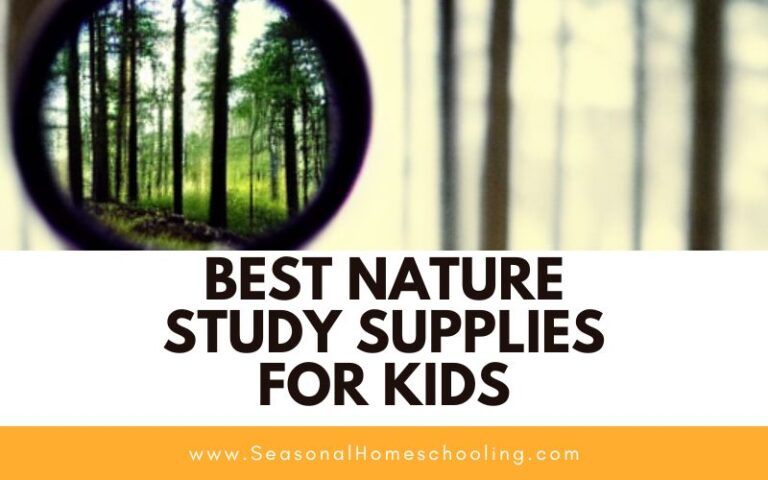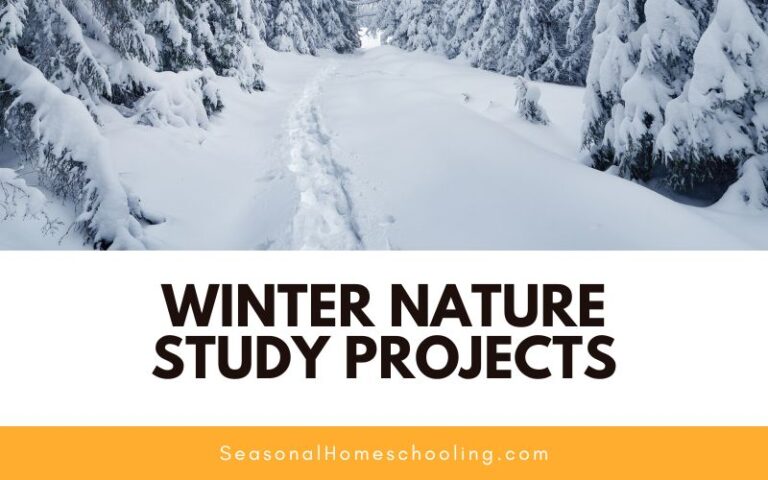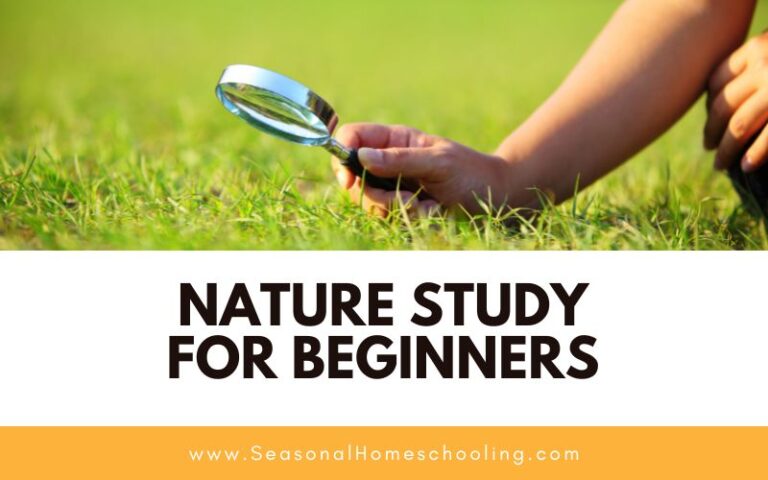4 Tips for Getting Started with Nature Study
Here are four simple exercise guidelines for nature study education that you can implement in your homeschool. What a joy it is to study the great outdoors, and you’ll find even more pleasure in it. Let us help you with your own inspiration every step of the way.

This post contains affiliate links, see my disclosure policy for more information.
4 Tips for Getting Started with Nature Study
The world has so many fascinating things to offer that you never have to worry about running out of things to do or learn.
Nature Study is Long-Term
Nature study is a project that builds from year to year. Take it one subject or topic at a time and see the results through the season.
When we think of nature study sometimes we think of it as a one-and-done thing. But there are some long-term nature studies that can be so interesting and beneficial.
Take Your Time
Begin slowly and naturally to share a love of things in nature with your children. You don’t have to jump into doing a nature study. Just like with many other things, ease into it.
Start by taking a walk to a specific place. We walk to the lake almost every day, we have natural conversations about what we see, and what has changed from the last time we took our walk.
It doesn’t have to be forced.

It Doesn’t have to Take All Day
You don’t need to devote large blocks of time to nature study to be successful.
As I mentioned before, a walk each day, or every other day, works great for us. But you don’t have to go for a walk, you could go out in your yard, or even just look out your window.
You could easily keep a nature journal about what you see outside a window.
Create a Nature Journal
Nature journals are a natural extension of the learning that happens during nature study.
Nature journals are a great addition to your nature studies. They are a place for your kids to keep track of the things they learn, see, and do while they are in nature. Whether that’s drawing, writing, or doing a combination of both in their journals.
Nature study should be something that doesn’t seem like work. Allow the child to soak in the nature study opportunities that come your way.
More Nature Study
Best Nature Study Supplies for Kids






